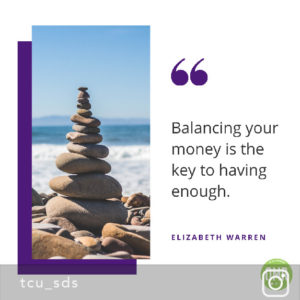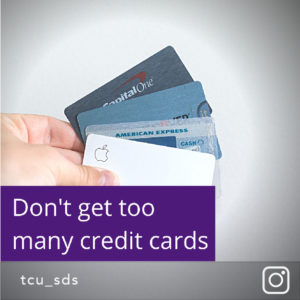1. Learn to cook
Considering we’re all being limited in how much we can go outside, now is the perfect time to use the kitchen that’s gathering dust. According to an article from The Simple Dollar, people spend roughly $230 a month on eating out and about $12 on every meal eaten out. Using that kitchen, on the other hand, averages about $4 per meal. Plus you can learn to cook tons of your favorite restaurant foods at home!
2. Update your closet
I’m not sure about everyone else, but half my closet hasn’t seen the sunlight in months. And one of the struggles of this pandemic is that as stores reopen, fitting rooms are still closed. So take this time to bring out your old clothes! If you have some sewing skills, refashion your wardrobe into something new. If making seams isn’t your thing, try making new outfits with your old and newer clothes. This is the time to try something new, especially since most people will only see your shoulders and up on Zoom calls!
3. Find at-home workouts
Gyms are slowly reopening, but if the idea of paying money for a membership or seeing people scares you, there are plenty of ways to work out without leaving your house! You can order workout DVDs online like P90X and BeachBody on Demand or you can download free trainer apps to your phone. A personal favorite for me is Workout Trainer by Skimble which has a ton of free workouts with different types of workouts, time lengths, and intensity options.
4. Take online classes (usually cheaper than in-person and definitely cheaper than a 4-year school)
If you’re able to, take online colleges at a community college. The average credit hour at community college is under $400, while at university this cost is close to $600 per credit hour (CollegeCalc and Student Loan Hero). Over time, this could save you thousands and provide an easy way to knock out some gen-eds. This does depend on what credits the school allows to be transferred in and whether you’re allowed to transfer classes, so check with your advisor beforehand.
5. Take advantage of free virtual classes
Along the same lines, lots of schools and groups are posting free virtual classes so people can continue to learn while in quarantine. This could include developing a new skill, relearning something from college, or exploring new career options. Harvard University has over 80 different free courses available to the public, and many other schools and organizations are offering more. All it takes is a google search to see what’s out there for you.
6. Look at all your subscription services
Since we’re all staying at home more, it’s time to look at all your subscriptions. Still, paying for a gym membership you haven’t used since February? Time to call and cancel. How about music streaming services? According to NextGen, the average consumer spends $237 a month on subscriptions. Think about how much you could save each year if you cut ones you weren’t using.
1. Create a healthy budget for YOU
A budget is probably the best and often most simple way to manage your money and ensure you can get the things you need. If you find yourself wondering where each paycheck went, a budget may be just the thing for you. Budgets also make you more aware of your spending habits, helping you to find expenses to cut back on. The most important part is making a budget that works for you and changes with you. Don’t be afraid to adjust over time to improve your budget.
2. Build your credit score
Credit scores are crucial in life to obtaining loans, getting a mortgage, and even getting a job. For those with credit cards, make sure you’re paying off as much of your bill as you can each month and keep your credit utilization low. If you have trouble with this, only let yourself use your credit card for small purchases or monthly fees you know you can pay off, like a cell phone bill, gas, or groceries. For those without credit cards, if you have loans or bills you pay, those can affect your credit score too. So keep up with your monthly payments and you’ll be building a credit score without the card!
3. Put money in a savings account
This is important especially if you find yourself spending money on things you may not need (I’m talking about all those Target mugs in your cupboard). Putting money away into a savings account allows for the money to earn interest and for you to focus on things you really need. This also helps if there’s something expensive you want to buy, but don’t want to go broke doing it. You can put a little money away with every paycheck and make sure you have the funds on hand to purchase what you need rather than use a credit card or take out a loan.
4. Cut back on take-out
When you get off work, I’m sure the last thing you want to do is go home and cook for yourself. But cutting back on how often you get takeout or eat at restaurants is a quick way to start saving money. The average meal out costs around $12, so cutting out just two meals a week can save you almost $100 a month. And there’s plenty of books and guides on how to cook, which are perfect for those who are just learning.
5. Invest in reusable containers and bottles
Whether you’re someone who’s constantly buying water bottles or using five zip-lock bags a day, investing in reusable containers will help you save. Reusable containers and bottles will seem more expensive at the moment but will save you money in the long run. Not to mention, they’ll be higher quality than disposable alternatives and have more attractive options.










